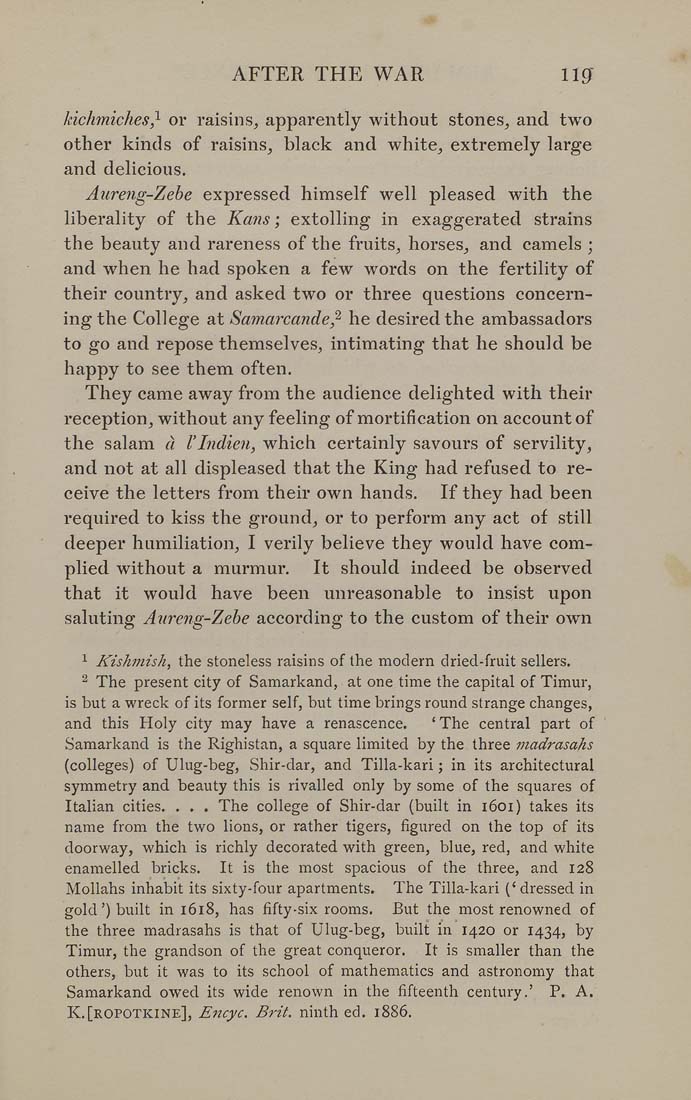AFTER THE WAR lig
kichmichesj or raisins, apparently without stones, and two
other kinds of raisins, black and white, extremely large
and delicious.
Aureng-Zebe expressed himself well pleased with the
liberality of the Kans; extolling in exaggerated strains
the beauty and rareness of the fruits, horses, and camels ;
and when he had spoken a few words on the fertility of
their country, and asked two or three questions concern¬
ing the College at Samarcande j he desired the ambassadors
to go and repose themselves, intimating that he should be
happy to see them often.
They came away from the audience delighted with their
reception, without any feeling of mortification on account of
the salam a I'Indien, which certainly savours of servility,
and not at all displeased that the King had refused to re¬
ceive the letters from their own hands. If they had been
required to kiss the ground, or to perform any act of still
deeper humiliation, I verily believe they would have com¬
plied without a murmur. It should indeed be observed
that it would have been unreasonable to insist upon
saluting Aureng-Zebe according to the custom of their own
' Kishmish, the stoneless raisins of the modern dried-fruit sellers.
^ The present city of Samarkand, at one time the capital of Timur,
is but a wreck of its former self, but time brings round strange changes,
and this Holy city may have a renascence. 'The central part of
Samarkand is the Righistan, a square limited by the three madrasahs
(colleges) of Ulug-beg, Shir-dar, and Tilla-kari; in its architectural
symmetry and beauty this is rivalled only by some of the squares of
Italian cities. . . . The college of Shir-dar (built in 1601) takes its
name from the two lions, or rather tigers, figured on the top of its
doorway, which is richly decorated with green, blue, red, and white
enamelled bricks. It is the most spacious of the three, and 128
Mollahs inhabit its sixty-four apartments. The Tilla-kari ('dressed in
gold') built in 1618, has fifty-six rooms. But the most renowned of
the three madrasahs is that of Ulug-beg, built in 1420 or 1434, by
Timur, the grandson of the great conqueror. It is smaller than the
others, but it was to its school of mathematics and astronomy that
Samarkand owed its wide renown in the fifteenth century.' P. A.
K.[ropotkine], Encyc. Brit, ninth ed. 1886.
|








